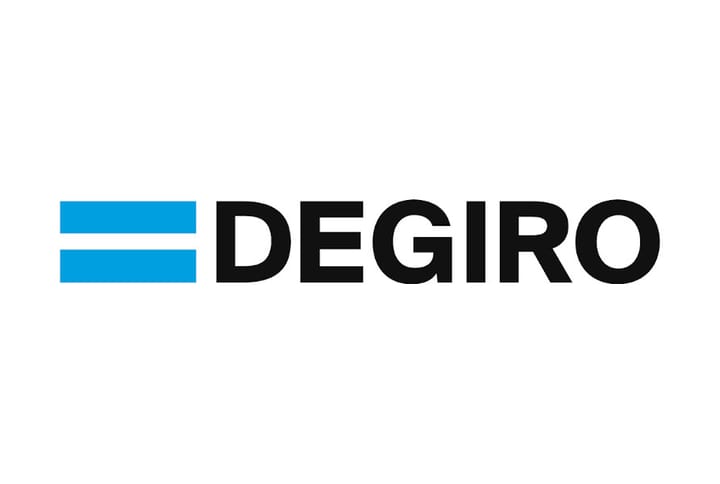Lump sum investing vs Dollar cost averaging
Lump-sum investing often outperforms dollar-cost averaging; however, DCA remains popular due to behavioral factors like loss aversion and regret.

Making up your mind about investing is certainly a big hurdle to pass. However, even when you do, the indecision hardly ever ends there. Deciding when to enter the market is usually a reason for just as much hesitation: should you invest all your money immediately, or spread it over a longer period? Let's find out.
- Definitions
- An intuitive comparison
- What the data shows
- The behavioral roots of DCA
- Reframing regret
- Conclusion
- Bibliography
Definitions
The first option is commonly referred to as Lump Sum Investing (LSI). As the name implies, it means investing all your available capital immediately. An alternative is Dollar-Cost Averaging (DCA), which means investing a fraction of your capital at regular intervals; for example, monthly over the course of a year. The “dollar” in the name is irrelevant; what matters is the process.
A third approach is Buying the Dip, where you deliberately wait for a market downturn of some magnitude before investing, with the intention of buying at a discount. Essentially, when others panic and leave the market, you step in. In practice, this is just a special case of lump sum investing where, instead of acting right away, you wait for what you believe is an opportune time. The topic of market timing and “buying the dip”, however, deserves an article of its own, so it won’t be covered here. As it should become clear from this article, timing the market is a bad idea.
Before diving into the details of LSI and DCA, it’s important to make a clear distinction. The money you regularly earn from your job, which you intend to invest, should be dollar-cost averaged by default: when your monthly income arrives, you invest a portion of it. End of story. This article is not about gradually setting aside income and then investing it all at once.
The LSI-versus-DCA question only arises if you suddenly find yourself with a large amount of disposable cash, for example, from a sizeable bonus, an inheritance, or the sale of a car or property. These are the typical scenarios where the distinction matters: is it better to invest everything at once, or spread it out over time?
An intuitive comparison
From a practical point of view, dollar-cost averaging often feels like the most sensible approach. By spreading your investment over time, you reduce your exposure to short-term market swings. Sometimes you’ll buy when prices are low, other times when they’re high, and on average, your entry point ends up somewhere in between.
If the market is trending downward, DCA ensures you benefit from falling prices. Each investment tranche buys a larger share of the market as it declines. By contrast, if you had invested a lump sum immediately before the downturn, your investment would lose value right away, leaving you with no cash to take advantage of cheaper prices. This example highlights the behavioral appeal of DCA: in essence, it helps minimize regret.
However, that’s only half the story. If the market is trending upward, the opposite happens. A lump-sum investment captures the full growth from the start, while DCA leaves part of your capital on the sidelines, buying fewer and fewer shares as prices rise.
The main reason we invest is that, over long periods, markets are expected to trend upwards and therefore deliver positive returns. Intuitively, this suggests that lump-sum investing is usually the better strategy, since it maximizes the time your money can participate in market gains.
What the data shows
Numerous studies have shown that lump-sum investing (LSI) tends to outperform dollar-cost averaging (DCA). In a 2012 Vanguard study of the U.S. market from 1926 to 2011, using rolling 10-year periods, LSI outperformed DCA about 67% of the time [1]. In this analysis, DCA was defined as spreading investments evenly over 12 months. The researchers also found that the longer the DCA period, the more pronounced LSI’s outperformance became. For example, when the DCA period was extended from 12 to 36 months, LSI outperformed in roughly 90% of the 10-year windows.
A 2020 study covering a sample of countries from 1970 to 2020, as well as longer U.S. (1926–2020) and Canadian (1956–2020) datasets, found similar results [2].
![LSI vs DCA for 10-year historical periods of selected countries [2].](https://www.swissmisfortune.com/content/images/2025/09/dca-2.png)
More interestingly, the study also quantified the gap, showing that DCA lagged LSI by about 0.38% in annualized returns over 10-year periods.
![LSI vs DCA annualized 10-year performance difference [3].](https://www.swissmisfortune.com/content/images/2025/09/dca_more-1.png)
To put that in context, popular ETFs today often have fees in the 0.10–0.20% range. That means the performance penalty from DCA is roughly two to three times the size of typical ETF fees; and if you consider compounding growth, it's hardly negligible.
Vanguard extended the analysis globally with a 2022 study using MSCI World Index returns from 1976 to 2022. In this work, Finlay and Zorn found that LSI outperformed DCA about 68% of the time across international markets [3].
Despite these more recent findings, the sub-optimality of DCA is not new. These results echo earlier work, including studies by Constantinides (1979) and Rozeff (1994). Rozeff even summarized the insight with a notable maxim [4]:
The bottom line of this finding is a new investment maxim: “invest without delay.” The institutional investor with cash to invest that delays investing is effectively dollar-averaging and likely to suffer a performance penalty compared with the investor that invests immediately.
In short, while LSI does not win in every case, the evidence is consistent: without the benefit of perfect foresight, roughly two times out of three, you are better off investing a lump sum rather than spreading it out over time.
The behavioral roots of DCA
Given the more favorable odds in favor of LSI, it’s natural to wonder why DCA remains so popular. In 1995, Statman proposed a behavioral framework for dollar-cost averaging, rooted in behavioral finance, based on four elements:
- Prospect theory: people dislike losses more than they enjoy equivalent gains. Losing $100 feels worse than winning $100 feels good. By reducing the risk of investing everything just before a market drop, DCA softens the emotional pain of potential losses.
- Aversion to regret: investors who use DCA lessen their anticipated regret. If prices fall after their first purchase, they can take comfort in buying additional shares at lower prices, reframing a misjudgment as a new opportunity.
- Cognitive errors: Many investors believe they can predict market moves, but in reality they usually can’t. By enforcing a steady buying schedule, DCA helps people avoid trying (and failing) to time the market, reducing mistakes caused by overconfidence or faulty predictions.
- Self-control: investing consistently is difficult for many people. DCA builds in a disciplined plan, allowing investors to stay on track without having to rely on willpower each time they invest.
Reframing regret
A fascinating 2016 study by Panyagometh and Zhu showed that, both theoretically and numerically, DCA is approximately equivalent to a lump-sum investing 50% to 65% in risky assets and allocating the remainder in a riskless asset [5]. In other words, LSI outperforms DCA to such an extent that you don’t even need to take maximum risk by putting 100% of your capital into stocks. Investing immediately in a safer portfolio that allocates around 40% to bonds can deliver returns comparable to what DCA would have produced on a 100% stock portfolio.
The implications of this study are profound. If your aversion to regret makes DCA seem more attractive than LSI, it may indicate that the risk level of your portfolio is not well matched to your tolerance. Put differently, if the fear of a downturn is what leads you to favor DCA over LSI, the likelihood you will abandon your plan during market stress is high. In that case, rather than DCA, pursuing a less aggressive portfolio that allocates up to 30% in bonds would both improve the chances of sticking to your strategy and, in most scenarios, still produce better outcomes than DCA.
Conclusion
In summary, the scientific literature shows that, all else being equal, lump-sum investing tends to outperform dollar-cost averaging about 65% of the time. The outperformance is meaningful: one study across selected countries found that DCA sacrifices approximately 0.38% of annualized expected returns.
Despite this tendency, many investors still prefer DCA, largely due to aversion to regret. While this caution is understandable from a behavioral perspective, research suggests that such fear may instead indicate a mismatch between an investor’s portfolio risk and their risk tolerance, signaling the need to adjust the portfolio rather than delay investing.
Bibliography
[1] Shtekhman. A. & Tasopoulos C. & Wimmer B, 2012, Dollar-cost averaging just means taking risk later, Vanguard research
[2] Felix, B. 2020, Dollar Cost Averaging vs. Lump Sum Investing. PWL Capital Inc.
[3] Finlay M. & Zorn J. 2023, Cost averaging: Invest now or temporarily hold your cash? Vanguard research
[4] Rozeff, M. S, 1994, Lump-sum investing versus dollar-averaging. The Journal of Portfolio Management, https://doi.org/10.3905/jpm.1994.409474
[5] Panyagometh K. & Zhu K. X, 2016, Dollar-cost averaging, asset allocation, and lump sum investing. The Journal of Wealth Management, https://doi.org/10.3905/jwm.2016.18.4.075
Read next

Home-country bias
Overweighting your home country in investments may feel natural, but history shows diversification is key to managing risk and volatility.

DEGIRO review 2025
DEGIRO is a low-cost brokerage platform available to European and Swiss investors. The article takes a closer look at what it has to offer.

Factor investing: the capital asset pricing model
The CAPM was the first framework that tried to explain how an asset’s risk affects expected returns and laid the foundation for factor investing.
 SwissMisfortune
SwissMisfortune